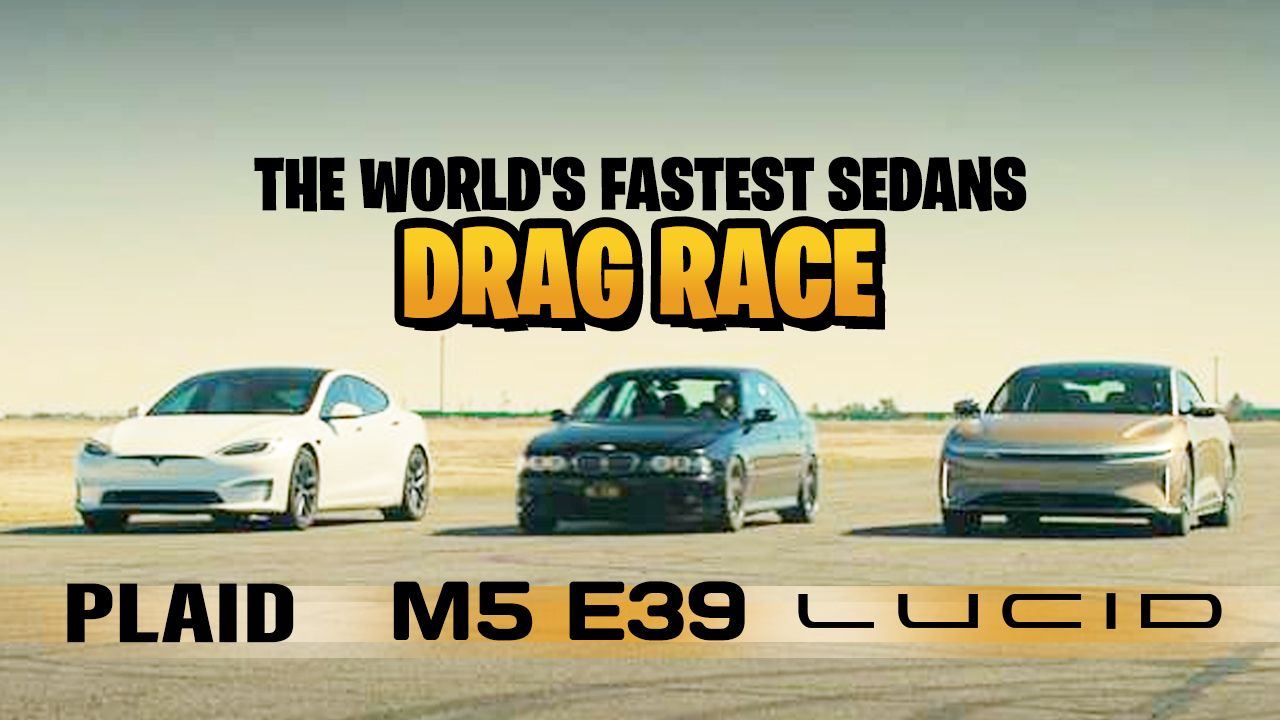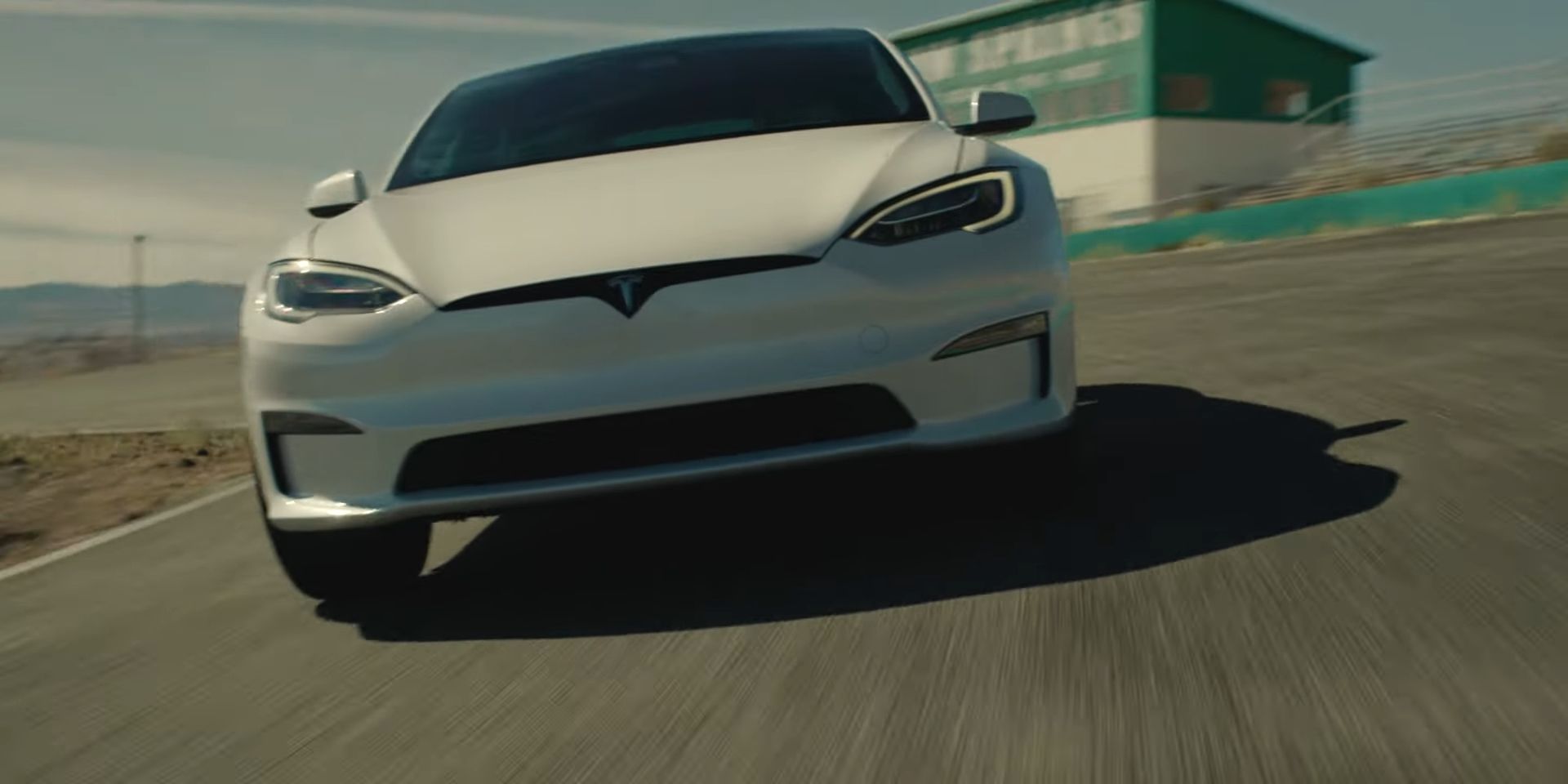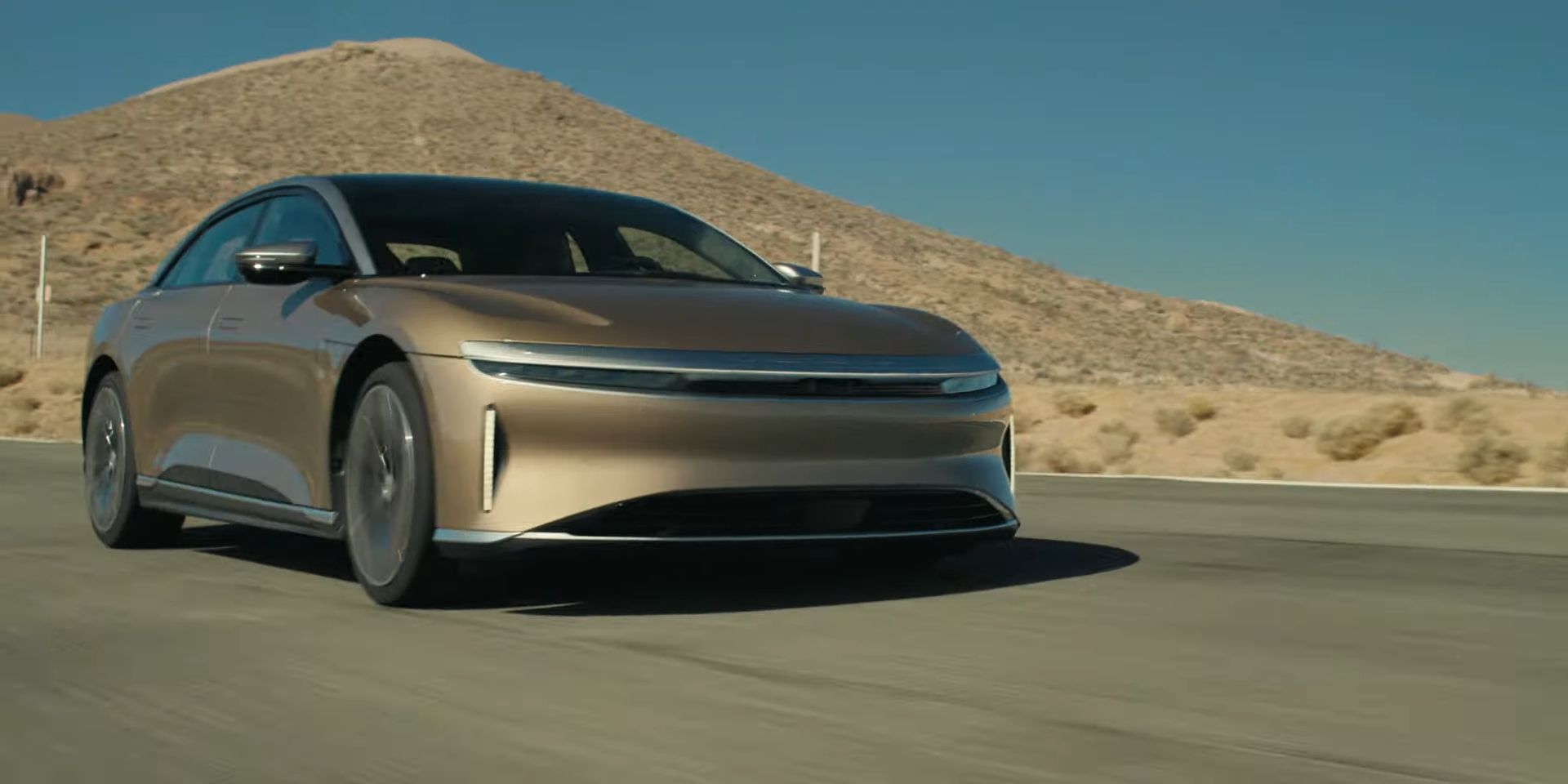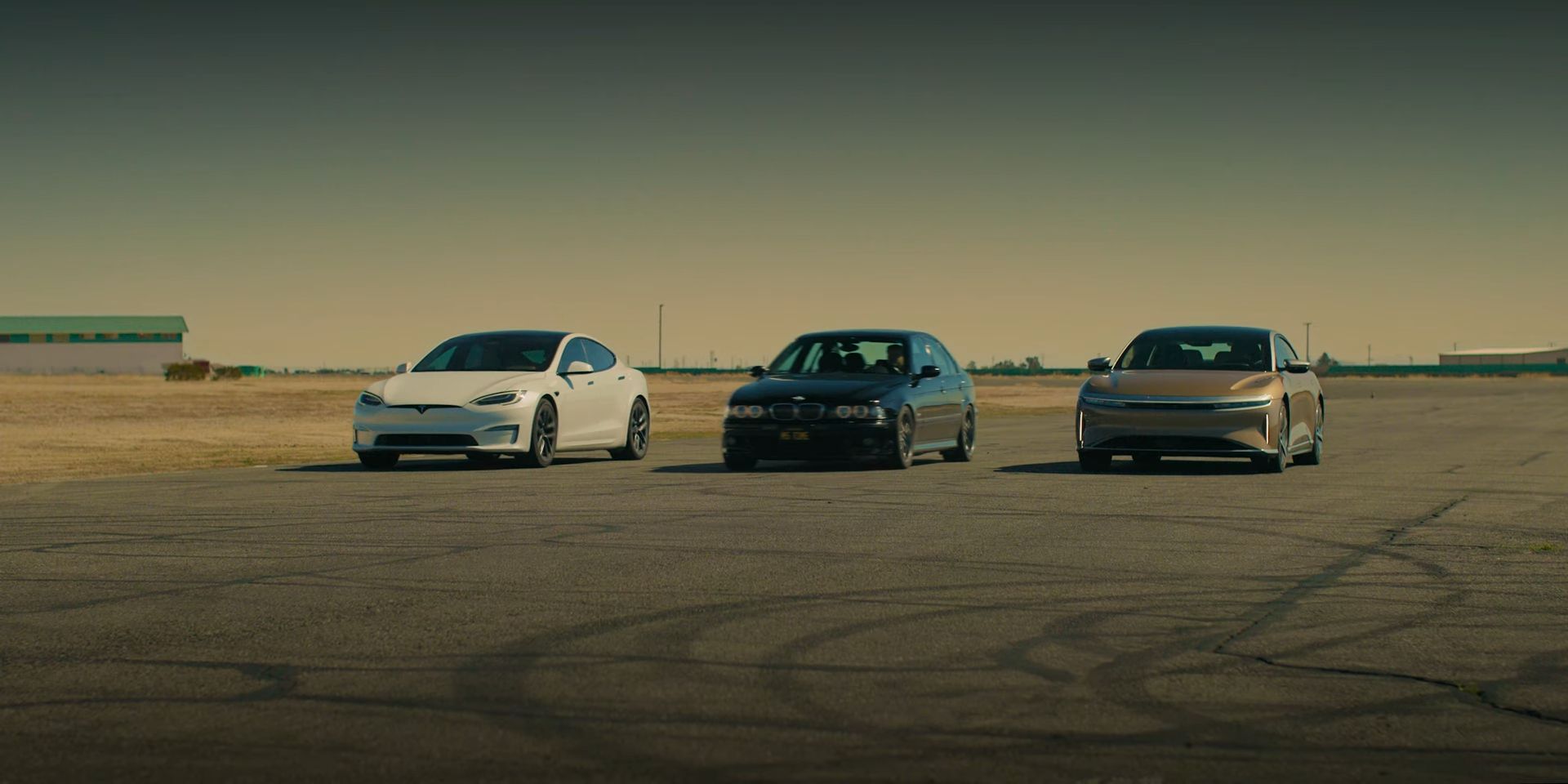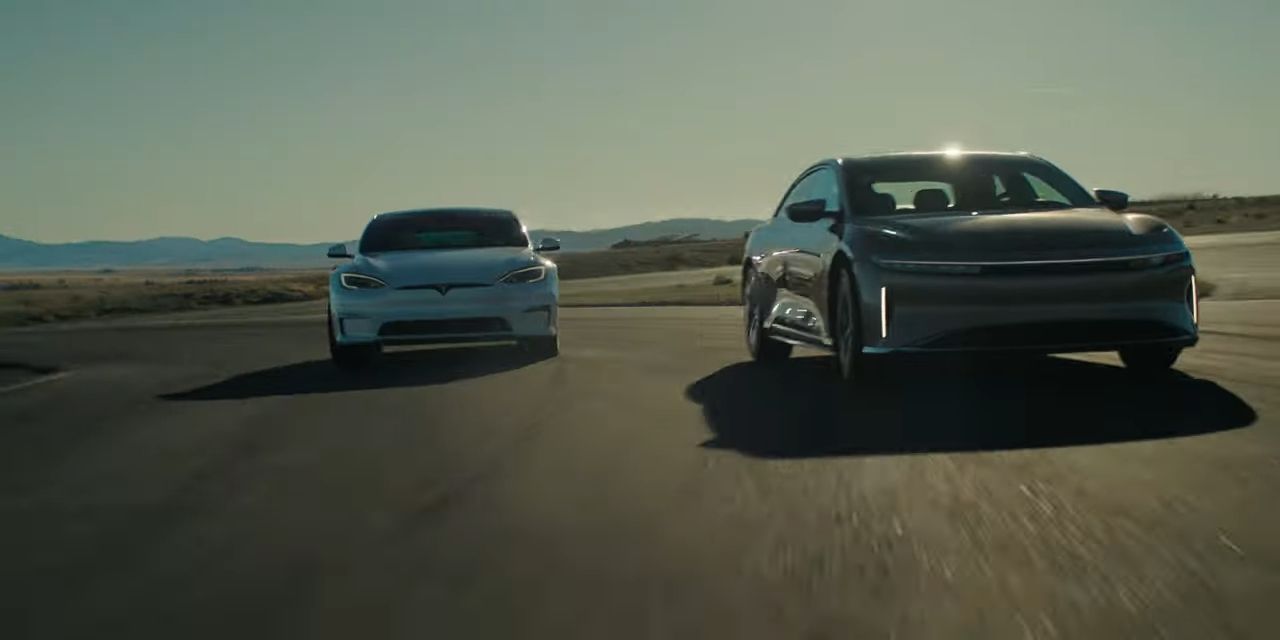High-performance EVs are here and they are very fast. The Tesla Model S Plaid and, now, the Lucid Air are both capable of 0 to 60 mph (97 km/h) in the two-second range, and both pack over 1,000 horsepower. To get an idea of just how fast cars have become, both EVs will square off against the fastest sedan from 20 years go – the BMW M5 E39 – in a quarter-mile drag race with a twist, after which both EVs will race against…a person falling from an airplane.
Tesla Model S Plaid
You probably know the specs, but here goes. The Plaid features three electric motors, which provide all-wheel-drive capability and an output of 1,020 horsepower and 1,050 pound-feet (1,424 Nm). It also has "Cheetah stance", allowing it to blast to 60 mph (97 km/h) in around 2.0 seconds, despite the weight of 4,766 pounds (2,162 kg).
Lucid Air
The Lucid Air is a luxury EV sedan and, as Jason Cammisa points out, “luxury is heavy”. The new EV tips the scales at 5,2036 pounds (2,375 kg). It has two electric motors – one per axle – which provide full-time all-wheel drive and, in the Dream Edition, a total output of 1,111 horsepower and 1,025 pound-feet (1,390 Nm). It may be called Air, but it does not have air suspension like the Plaid. The Air Dream Edition is still quick with a 0 to 60 mph (97 km/h) time of 2.5 seconds.
Racing against the BMW M5 E39
Back in the early 2000s, the BMW E39 M5 was the fastest performance sedan you could buy. With 400 horsepower and 369 pound-feet (500 Nm) from its 4.9-liter naturally-aspirated V-8, the M5 could sprint to 60 mph (97 km/h) in 4.9 seconds and reach the quarter-mile in around 13 seconds. Clearly, it doesn’t stand a chance against these 1,000+ horsepower EVs, so it gets a 70 mph (112.6 km/h) flying start.
As the M5 blasts by the Tesla and Lucid, at 70 mph, both cars launch, and the Tesla immediately shows, which is the quicker EV of the two. Despite the Beemer’s flying start, the Model S Plaid catches up and takes the win, finishing at 9.3 seconds at 152 mph (245 km/h). This is the same ET, an E39 M5 would take for the eighth-mile. The Tesla also managed a 0 to 60 mph (97 km/h) in 2.1 seconds.
Speaking of the M5, with the flying start, it managed a time of 9.5 seconds at 118 mph (190 km/h). The Lucid Air managed a quarter-mile time of 9.9 seconds at 142 mph (228 km/h) while sprinting to 60 mph (97 km/h) in 2.6 seconds. However, it wasn’t enough to catch the M5. On the plus side, the Lucid Air achieves something remarkable. It uses less electricity than a Nissan Leaf – 116 MPGe versus 115 MPGe.
Race against gravity
We are all tired of seeing the Tesla Model S Plaid win every time, stock for stock, but is it quicker than gravity? In order to find out, both EVs race against a skydiver jumping out of an airplane at an altitude of 1,320 feet (quarter-mile). However, humans are not aerodynamic and the skydiver smashes into the ground after 10.7 seconds at a top speed of 129 mph (207.6 km/h).
Of course, it wasn’t an actual person that got splattered, but hopefully, we don’t need to tell you that. On the plus side, the skydiver was just behind a BMW M3 CS, which covers the quarter-mile in 10.6 seconds at 130 mph (209 km/h).
Long story short, electrification seems to have redefined what speed means. In just 20 years, high-performance sedans have become about 35-percent quicker. A 13-second car, which was, once, a sight to behold is now a mediocre achievement, compared to the silent breeze from nine-second Tesla and Lucid EVs.

